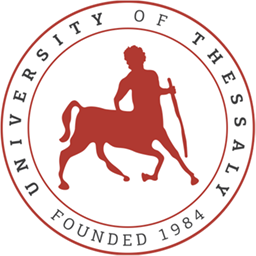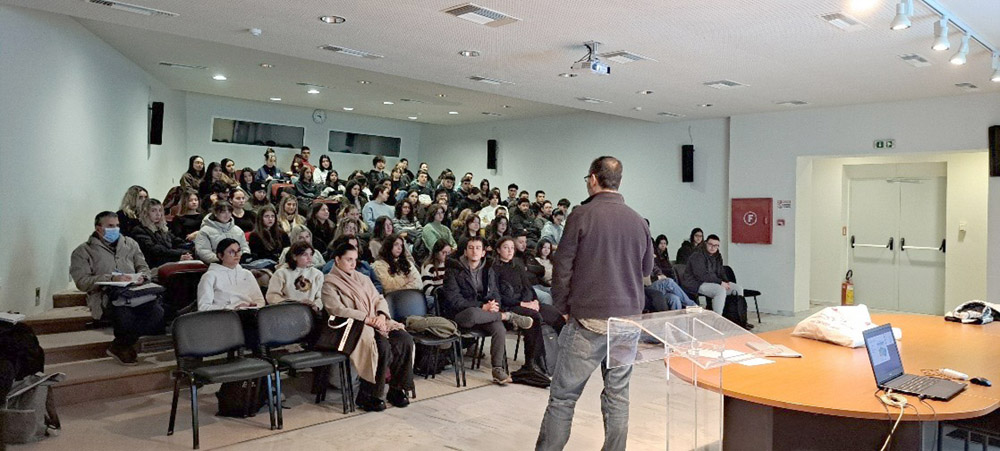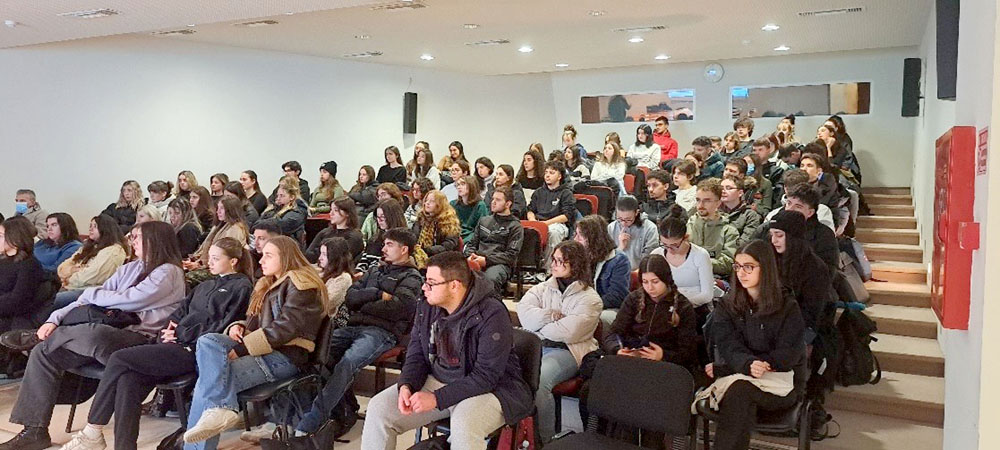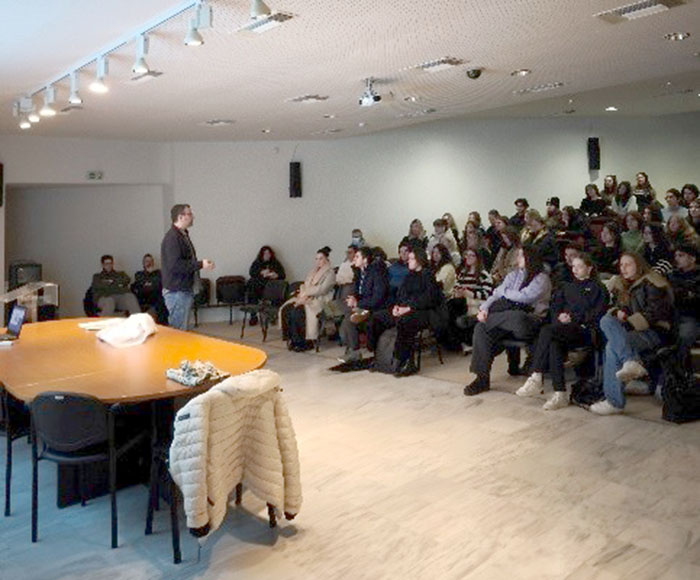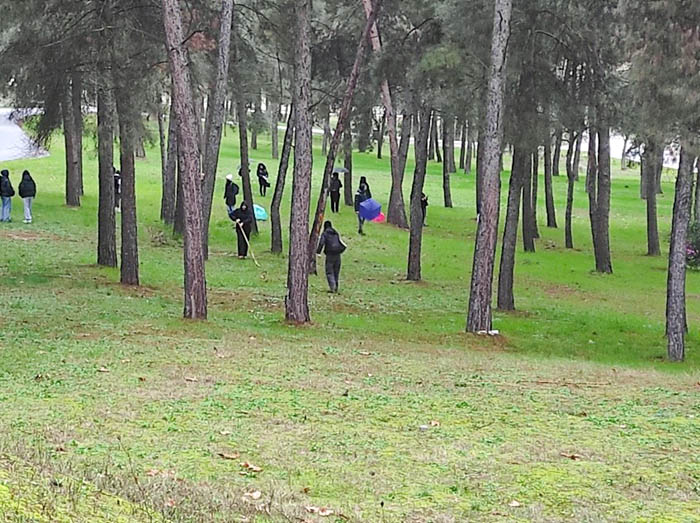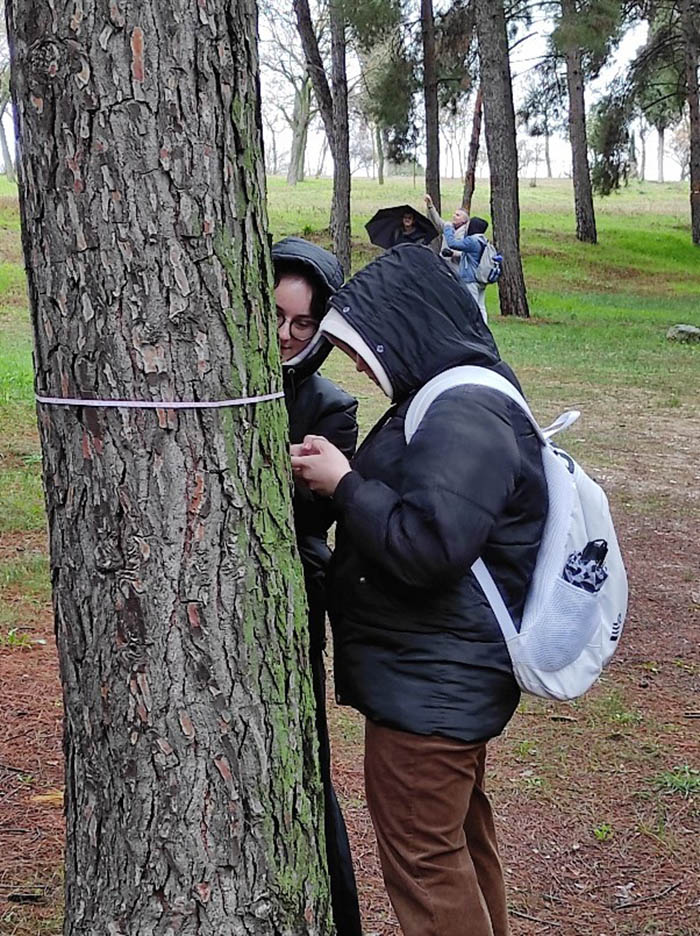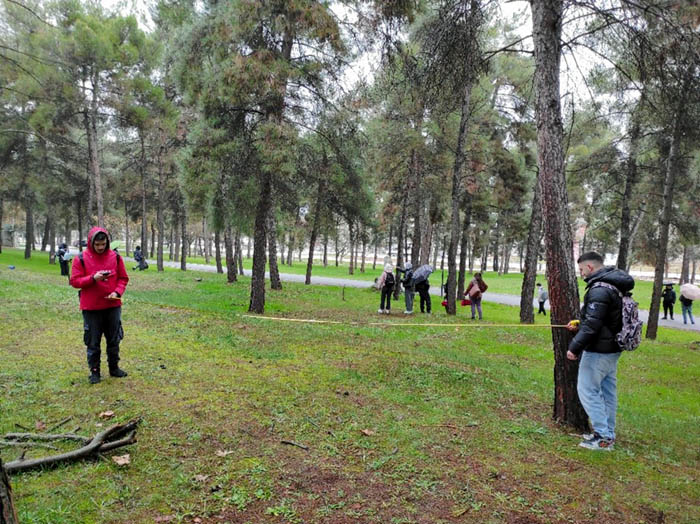Plants fix atmospheric carbon!
On Monday, January 13, 2025, an interactive event on the Global Carbon Cycle and its importance for Greenhouse Gases and Climate Change was held at the Diachronic Museum of Larissa (DML) under the auspices of the Ephorate of Antiquities.
The event was organized in the context of the 25th anniversary of the birth of the Department of Biochemistry and Biotechnology of the University of Thessaly and aimed to highlight the importance of the DML grove as a carbon tank for Larissa. In this context, the importance of Global Warming of carbon compounds such as carbon dioxide, methane, and fluorinated carbon compounds and the role of plants in sequestering carbon dioxide and reducing Greenhouse Gases were analyzed. In addition, carbon emissions, associated Global Agreements, and future requirements for a sustainable future for life on the planet as we know it, were discussed according to the current state of the art and existing models.
During the workshop, the following were presented:
- data of the current state published in United Nations reports;
- data of global scientific initiatives such as that of the Global Carbon Project;
- data of popularised article versions of reports of reputable scientific journals like Nature
- comparative data on pre-industrial revolution levels of greenhouse gases resulting from scientific research studies and models. All these were discussed in the context of the frameworks of important agreements made in the margins of the Kyoto (1997; in effect since 2005) and Paris (2015) conferences, following the agreement of the Montreal Congress (1987).
The lecture involved a vivid discussion with a high participation rate by the students who showed great interest and expressed their concerns. The lecture concluded with the presentation of protocols for the assessment of sequestered carbon in forest stands, followed by the active and enthusiastic participation of students in the implementation of these protocols for the assessment of sequestered carbon in the artificial grove of conifers that dominates the entrance of the DML (Figure 1). The grove was divided into 5 sections, and five groups of students estimated the sequestered carbon in each of them using the method of allometric equations. Collectively, it was estimated that the DML grove contains an average of about 11 tons of carbon per 1,000 m2 in a total area of about 70,000 m2 (770 metric tons of carbon in total) of coniferous trees.
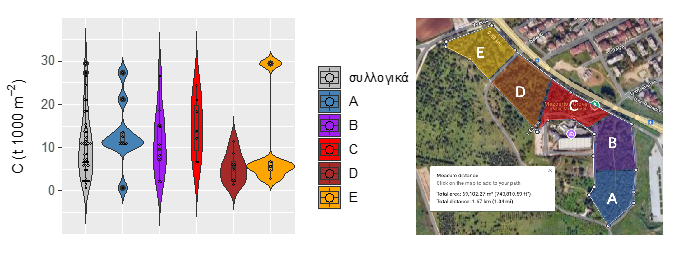
Figure 1. Left: Graph of sequestered carbon distribution (C) in tonnes per 1,000 m2 (t 1000 m-2) during the various sector estimates and collectively in the conifer grove of DML. Right: Sectors used in the estimates and total area of the grove according to Google Maps (as of January 13, 2025).
The event was organized by Assist. Prof. Sotiris Vasileiadis and Prof. Katerina Moutou with the support of postdoctoral researchers Raphael Angelakopoulos and Andreas Tsipourlianos. The employed method of calculating sequestered carbon does not require specialized equipment and can be easily applied in the case of other groves of the Municipality of Larissa. The workgroup will be happy to collaborate with the Municipality and the Green Administration division for other groves as well.
The Department of Biochemistry and Biotechnology would like to thank the Ephorate of Antiquities of Larissa for embracing the event and the staff of the DML for all their support.


